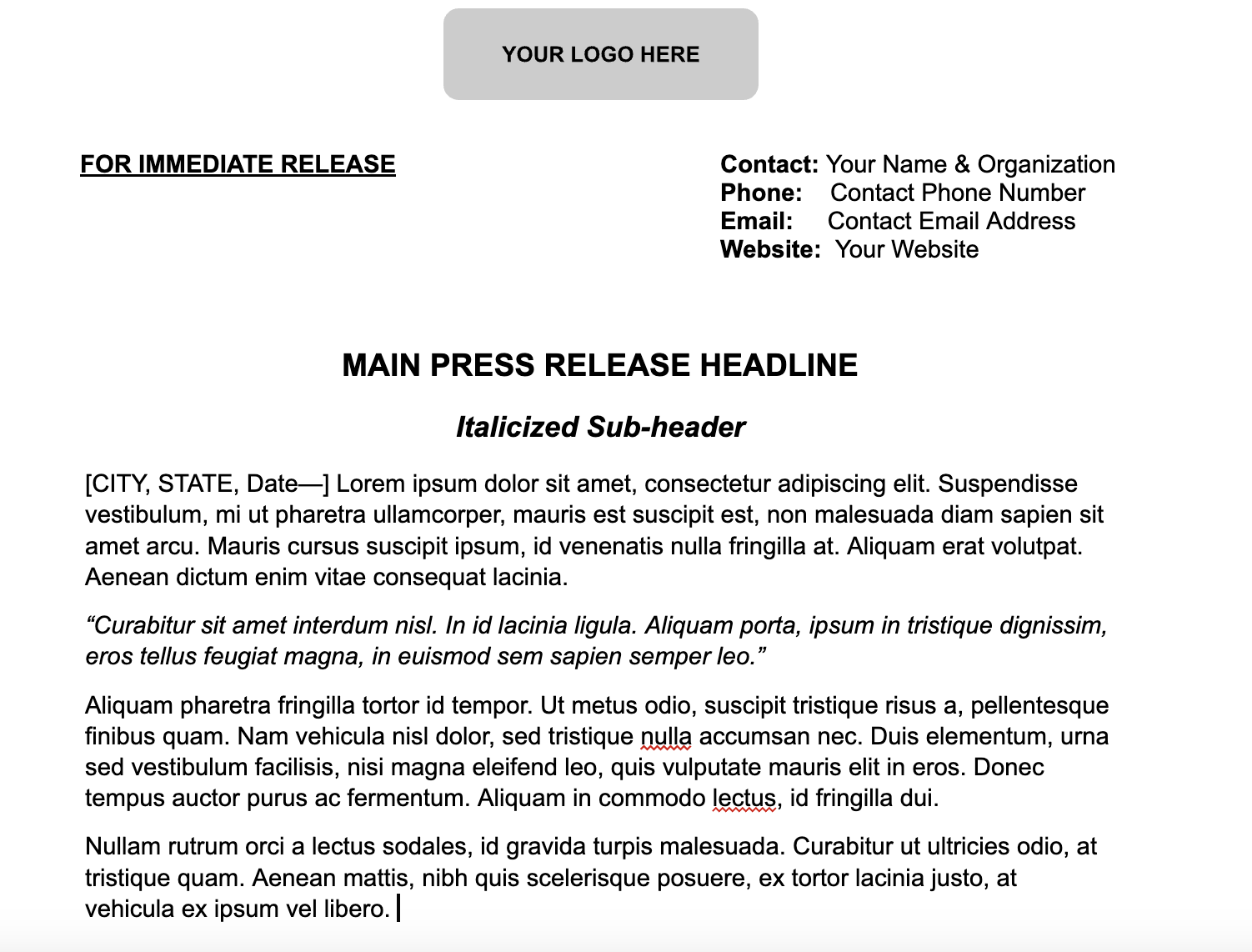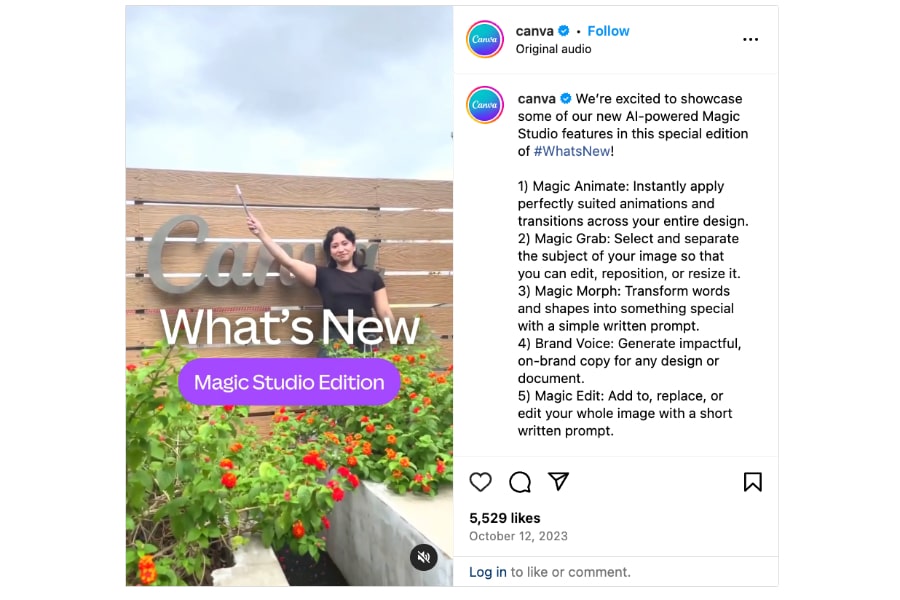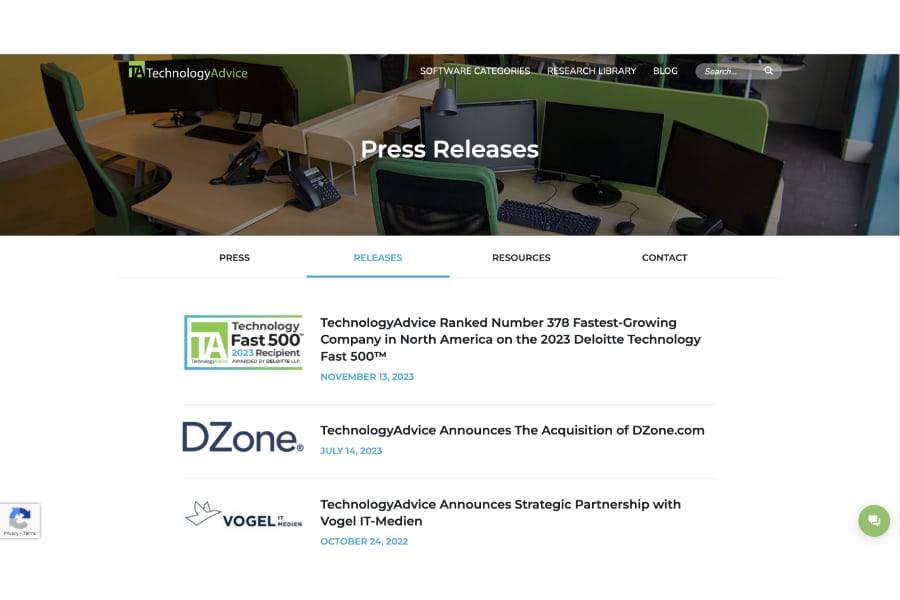Press releases play an important role in getting the word out about your business but they don’t just grant you wide visibility, they also help build your credibility as a brand. When people read about your business in the paper or see it in the local news, it significantly increases your credibility and gets more people interested in your business.
But before all that, you’ll first need to learn how to send a press release correctly. In journalism, where I worked before turning to marketing, following proper formatting for documents like press releases is always necessary because it upholds the journalistic standard. Submitting a press release the correct way sometimes means the difference in getting your story published vs getting sent to the spam folder.
Press releases aren’t all as complicated as they seem. Follow along below as I detail the steps for how to submit a press release to journalists and media outlets the journalist-approved way.
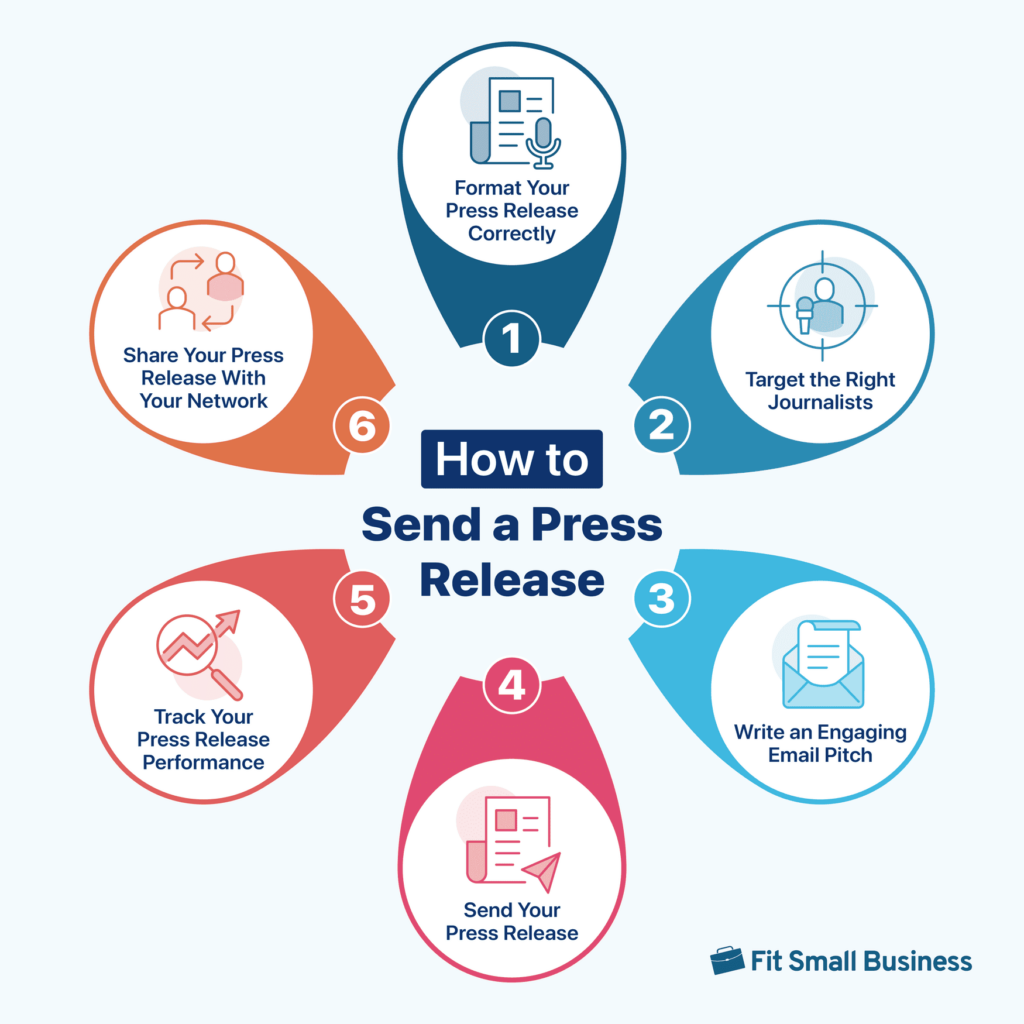
1. Format Your Press Release Correctly
The first order of business before sending out your press release is to ensure it follows proper press release formatting. The correct press release format includes:
- Your logo
- Your contact information
- When your press release will be distributed (for immediate release or embargoed for future release)
- Your press release headline
- Your press release body beginning with a dateline
- A short boilerplate about your company
I prepared a press release template below that you can download and use—it’s already prepared with the correct press release format.
Following proper formatting is important as journalists expect to see press releases in a specific format. Not sticking to it makes your press release look unprofessional and risks your chances of getting published and growing your brand presence.
If you want to leave your press release to media professionals instead to ensure it’s up to industry standards, there are many press release services that can help. My top recommendation for small businesses is EIN Presswire, which can write, format, and distribute your press release for you from $99.95.
2. Target the Right Journalists & Media Outlets
After formatting your press release correctly, the next step is to send it to the right people. This means building your contact list of media professionals you’ll be sending your press release to—depending on the nature of your press release story. If you’re targeting a mass audience (i.e., your story is relevant to the general public), then you can go ahead and send your release to major nationwide media outlets like NBC News or CNN.
Meanwhile, if your story only concerns a very specific subject matter and audience—say for instance, your biomedicine company published a new paper on biomedical devices—then you might only target industry-specific journals and news sites for your press release.
Targeting the right journalists is important because journalists only publish news stories relevant to their readers. If your biomedicine company sends its new study to ESPN, for example, there’s a probable chance it won’t be picked up (unless it somehow affects athletes), but it probably will be picked up by a medical journal, and vice versa.
There are many ways to build your media contact list. You can manually search for journalists’ email addresses on media outlets’ websites and compile them into a spreadsheet, but I recommend opting for a press release distribution service instead.
This is because these services already have established connections with journalists and media outlets, who already expect press releases from them. There are even free press release distribution services like PRLog and PR.com.
Researching Media Outlets’ Audiences
Ideally, you want your press release to fit in as organically as possible with the rest of your target media publications’ content. This is why researching their audiences is a key step in sending a press release.
When researching media outlets’ audiences, note if their demographics, interests, and behaviors align with those of your target audience. You can research these via free site checkers like SimilarWeb that offer data on websites’ audiences.
A particularly handy trick I use is to look at publications’ most engaged followers on their social media. These data give you insight into publications’ readers and see if they’re a good fit for your business.
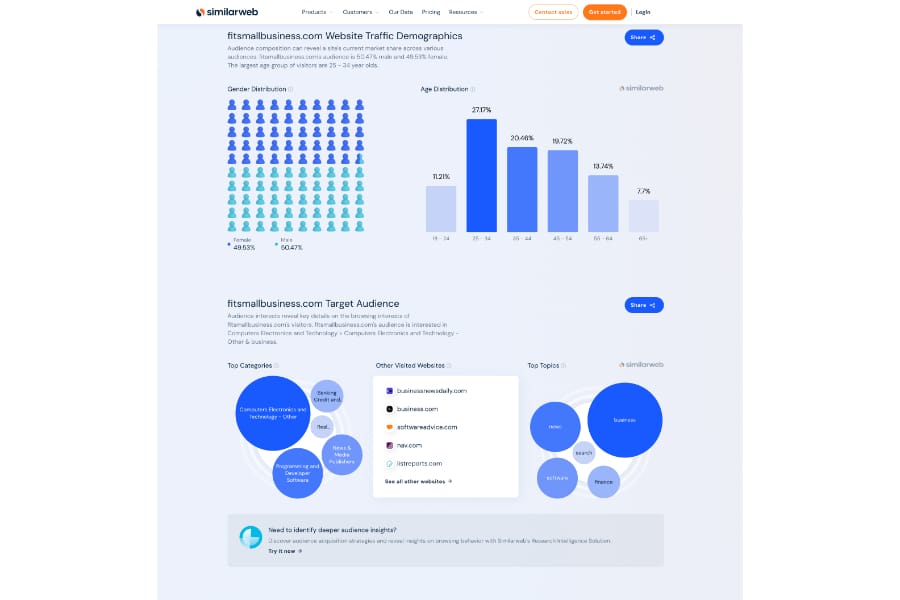
Here’s an example of fitsmallbusiness.com’s audience demographics as seen through SimilarWeb.
3. Write an Engaging Email Pitch
Knowing how to send a press release via email also includes writing a good emfThis not only keeps your press release visible to the public but also increases your SEO and credibility to site visitors.ail pitch. This is important because your email pitch is the first impression journalists will have of you and will determine whether or not they’ll open your press release. This means your email should come across as friendly but professional, and detailed but concise.
Briefly introduce yourself and your company and share a few key details about your press release story and why it’s relevant to their readers. You’re presenting yourself as a source, not a salesperson. I prepared a template below that you can use as a reference.
Dear [Journalist’s Name],My name is [Your Name], and I am sending this email on behalf of [Company]. I am writing to share a press release with you regarding [Topic of press release] to be released on [Release date]. You can read the release in the attached document.
This news is important to your audience because [offer a compelling statistic or reason why this would directly affect the journalist’s audience].
Would you share this news with your audience so they can [include an action like attending the event you’re hosting or buying your book, or how they can benefit from learning about your story]?
Please don’t hesitate to contact me directly if you have further questions about this story.
Thank you for your consideration.
[Your Full Name] and [Professional Title]
[Your Company]
[Your Phone Number]
[Your Email Address]
Tailor the template above to the journalists or media outlets you’re pitching to. For instance, if you’ve been following a journalist for a while and think your story is a perfect fit for their writing, explain why (concisely) in your pitch. Journalists receive dozens of press release emails every day—adding a few thoughtful details can help yours stand out.
4. Send Your Press Release
After building a contact list and crafting your email pitch, the next step is to send your press release to the press. As mentioned, the best way to do this is via press release distribution services, as they already have contacts with hundreds of journalists and media outlets and are your best guarantee of getting published. Below are some of my best recommendations.
Best For | Targeting traditional media outlets and search engines | Same-day press release distribution for immediate announcements | Mass press release distribution across 700-plus publications |
Starting Cost | $99.95 | $399 | $159 |
Turnaround | Same day | Same day | Two days |
With these platforms, you’ll only need to select a provider and plan, a release date, and a target audience (an industry, location, or demographic, for example). Then, upload your release and multimedia, select any additional services you want (e.g., direct-to-journalist emails), and complete the checkout process. The service’s in-house PR professionals will handle the rest of the distribution.
Another way to send your press releases is by emailing them out manually. However, this is often more time-consuming and less guaranteed to get a placement. If you choose to send manually, make sure to tailor your pitches to each contact so your email doesn’t come off sounding too generic.
Learning how to send press releases also involves knowing the right timing. This is because the best time to submit press releases varies with media outlets. For instance, you can usually send press releases to news outlets a few days before publication, while trade publications only accept them months in advance.
Here are some general tips for how far in advance to send a press release to different media outlets:
- Traditional media outlets (print, radio, TV): Send your press release about a week in advance, if possible (with the exception of immediate releases).
- Online media: Just as with traditional outlets, send a week ahead.
- Trade publications: This can vary with each publication, but they usually accept submissions three to six months in advance.
- Journalists, bloggers, and social influencers: If you want to invite them to an event, send a media advisory two or three weeks before. Then, send your press release about a week in advance.
5. Track Your Press Release Analytics
Knowing how to submit a press release doesn’t end the moment you send it off to media outlets. You’ll also need to monitor if it was picked up and published on news sites. If you emailed your story directly to journalists, you may have received responses, or you can check how many recipients opened your email, visited a page on your website, or clicked a link.
Beyond how many placements your story received, there are other analytics you can keep track of to measure your press release’s success, like:
- The number of backlinks your press release earned (aka how many people clicked back to your website from your press release)
- Which websites linked back to yours
- How much website traffic your press release produced
- How many people it has converted (i.e., downloaded an attached document or followed your call to action)
You can get this data and more from your press release distribution service, usually via an analytics dashboard. However, if you need more help, use tools like Semrush, which checks how many backlinks your published press releases earned.
6. Share Your Press Release With Your Network
After your press release is published, one way to go the extra mile and boost its exposure further is to share your published press releases with your network on social media. This can be as simple as sharing the link to your published story on your Facebook and LinkedIn pages. You can also get creative and experiment with different content formats for different social platforms.
For example, turn your press release into infographics to post on Instagram, or create videos for YouTube and TikTok. You can also share them in your email newsletters.
Another option is to host your press release on your website on a dedicated “Press” page alongside your brand’s press kit. This not only keeps your press release visible to the public but also increases your SEO and credibility to site visitors.
6 Tips on How to Submit a Press Release Effectively
Press releases have always been part art, part science. While there is no set formula on how to send out a press release, there are certain industry best practices I’ve picked up over the years that increase your story’s chances of getting published, like diversifying your media outlets and ensuring your story is clear and well-written.
Here are some of my biggest tips for distributing press releases.
- Make sure your press release story has a clear angle. If you took a journalism class in school, then you probably already know that a clear angle is essential to every news story. Your angle is the main “meat” of your story—the reason why it’s relevant to your target audience. It needs to directly impact their needs, interests, and lives, or address their challenges and pain points.
- Don’t limit yourself to traditional news outlets. If there’s one thing the digital world has brought in, it’s the democratization of the media. No longer are news outlets the only source of new information in your industry. Now, there are bloggers and other content creators with plenty of influence over their communities, so consider adding them to your contact list, too.
- Write an attention-grabbing subject line. Before journalists open your email pitch, they’ll first read your subject line. And it’s often what will determine whether or not they’ll open the rest of your press release. Keep your subject line short but informative and give journalists an idea of what your story is about.
- Tailor your distribution time to your press release. Different press releases have different unofficial distribution times. For instance, crisis management press releases should be sent immediately, while mergers or acquisition announcements are usually sent a week ahead with an embargoed date. Event press releases can be sent weeks in advance.
- Follow up on your press release. Don’t be afraid to follow up with journalists about your press release, especially if it needs to be sent out immediately. A good time to follow up is about three days after your initial email. Politely reintroduce your press release and its key points and ask if they received your initial email. Most PR professionals agree on sending up to two follow-ups, nothing more.
- Build relationships with journalists. After sending your press release to a journalist, don’t let that be the end of your relationship. Businesses and journalists always thrive on symbiotic relationships—businesses need media coverage, and journalists need sources. If a journalist publishes your story, offer yourself as a source for future stories in the same niche or as a point person for other sources.
Frequently Asked Questions (FAQs)
The best way to send a press release with the highest guarantee of getting published is through a press release distribution service like EIN Presswire or Linking News. These services have plenty of experience distributing press releases and already have contacts with thousands of media outlets, search engines, and even bloggers.
Alternatively, you can send a press release manually by compiling a media contact list and emailing out your press release.
Press releases should always be sent via email, ideally with an email pitch briefly outlining your story and your press release attached as a document. You can also outsource your press release distribution to services like EIN Presswire or eReleases, which can distribute your press release to media outlets for you through a news wire.
The email pitch for your press release should briefly outline the main details of your press release and why it’s important to journalists’ audiences. Briefly introduce yourself and your business, mention your press release, and outline its key details and why it matters to their audience’s needs, interests, or pain points. Keep it clear, concise, and to the point.
Bottom Line
Learning how to send a press release the right way is a win-win situation. You get the exposure you need for your story and your business, and journalists get relevant stories to write for their audience. The good news is it’s a simple process: format your press release correctly, build a contact list (or choose a distribution service), craft your email pitch, and send your press release. After sending, track its progress and share your published story with your network.
